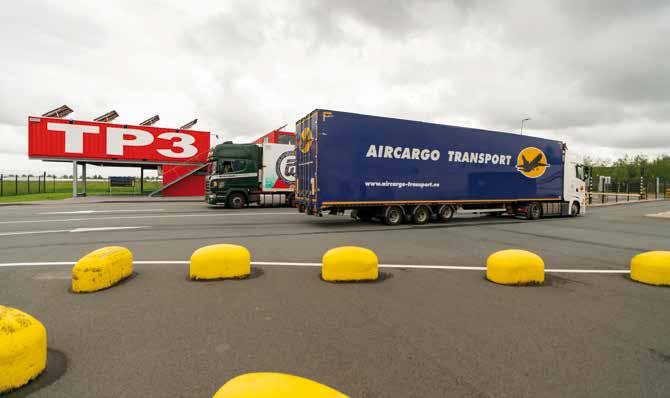18
ULD DIGITAL CARE & CONTROL
ULD optimisation within the air cargo chain From an idea and research to a concrete product Anand Bihari was Regional ULD Coordinator at AirBridgeCargo Airlines until the end of 2020. He was responsible for, amongst other things, the flow of ULDs within Europe and he had to ensure that the correct ULD type was in the correct place at the correct time and that the correct numbers were available for both scheduled flights as well as the many ad hoc charter flights. Part of this involved the returning of empty ULDs by customers.
as the data flows between chain partners are independent of each other and not available to all parties. Apart from this being sensitive to error (typing errors with ULD numbers often happen), it also costs unnecessary manpower.”
How does returning an empty ULD work? “A ULD is with an agent. The number shown on the ULD is written down on a sheet of paper. The empty ULD and the paper document are then delivered to the handling agent. The handling agent’s ULD Control Section checks if the number on the paper is the same as the number on the ULD. If so then the ULD number is typed into the handling agent’s own system in order that they can advise the airline that the ULD has been returned. This process was thought up decades ago and is often still being undertaken in the exact same way. It can be concluded that the same data is being input several times by various parties
What frequently happens in practice is that, for example, according to the ULD system of the airline or handling agent, ten pallets should be with forwarder X. The forwarder goes to look in the warehouse and advises the airline that there are only six. The question is: where are the other four? Investigating this and actually localising these four pallets is time-consuming for both the airline and the forwarder. A forwarder often uses systems that make it impossible to search at the ULD level. Therefore, multiple messages from the airline and forwarder’s different systems are needed to try to localise the missing pallets. Again, this is an example of where data sharing between the vari-
Text Esther Kort-Boreas
Anand: “Approximately 15-20% of our ULD fleet is with the forwarders. The general rule is that a ULD should be back with the airline within five days but, in many cases, this does not happen. For various reasons, many ULDs remain at the forwarders for a longer period and are only slowly returned to the airline and this is then at the expense of efficient ULD usage and can also have operational and financial consequences. The key question is: how do we get ULDs back as quickly as possible?”
Cargo Magazine



























